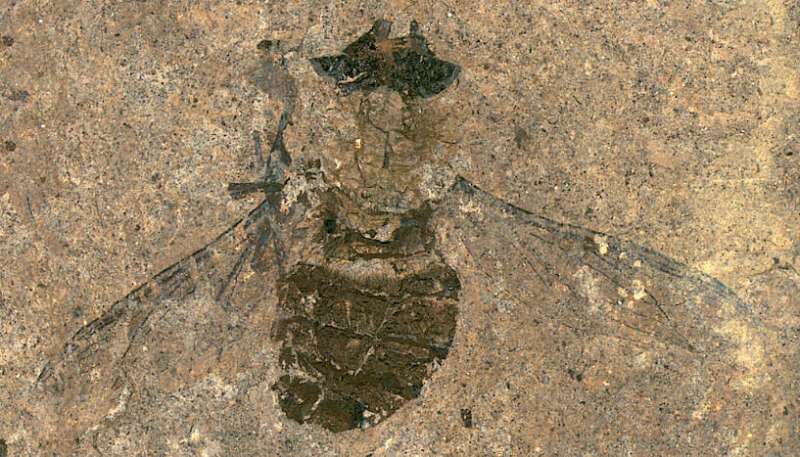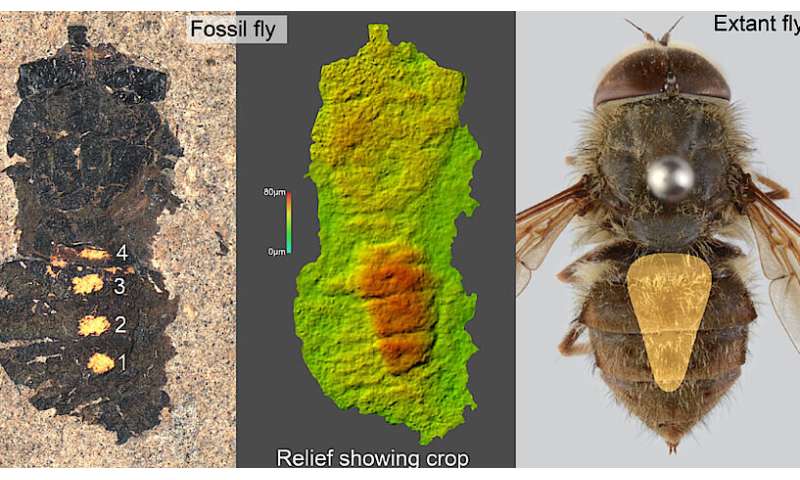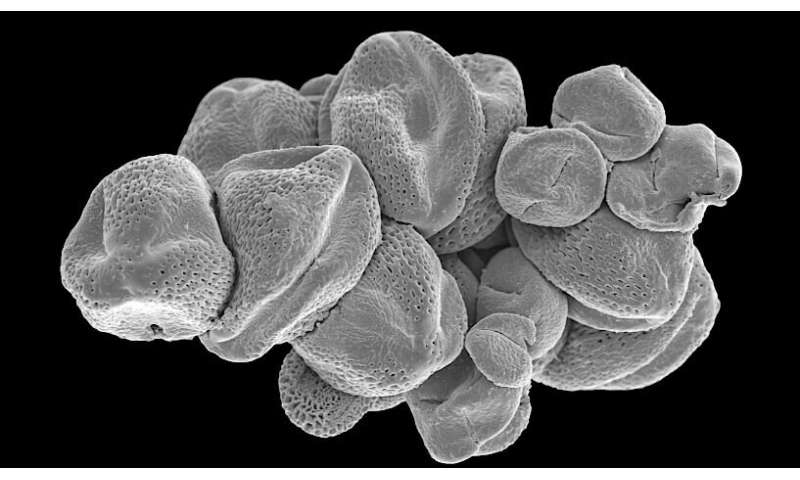Fossilized feeding frenzy: 47-million-year-old fly found with a full belly

An international team of scientists with Fridgeir Grímsson from the University of Vienna has found a previously unknown fossil fly species in old lake sediments of the Messel Pit, a UNESCO World Heritage Site in Germany. In the stomach of the fossil insect, pollen from various plants could be detected, which allows rare insights into the feeding behavior, the ecology and the role of the fly as a pollinator. The study was published in Current Biology.
It was not the fly itself that caught the scientists' attention, but its bulging abdomen suggesting it was still full with the fly's last food intake. Surprisingly, analysis of the stomach content revealed it was full with pollen from different plants. The fossil pollen from the fly's stomach was used to reconstruct the ancient environment inhabited by the fly, the biotic interactions between plant and fly, and the fly's behavior during feeding.
Flies as pollinators
Today, bees, butterflies and bumblebees are the typical pollinators, which are also known to feed on pollen. That flies also play an important role in pollination is rarely addressed. "The rich pollen content we discovered in the fly's stomach suggests that flies were already feeding and transporting pollen 47 million years ago and shows it played an important role in the pollen dispersal of several plant taxa," says Fridgeir Grímsson from the Department of Botany and Biodiversity Research of the University of Vienna. "Flies were major pollinators in ancient (sub-)tropical equivalent ecosystems and might even have outshined the bees," the scientist concludes.
-

Fossil Hirmoneura messelense from the Messel Pit and extant Hirmoneura maculipennis. Credit: Senckenberg -

Fossil pollen from the stomach of the fly. Scanning Electron Microscopy. Credit: Fridgeir Grímsson
Short-distance flights for food
The extracted pollen was dominated by grains of Decodon (waterwillow) and Parthenocissus (virgin ivy). Today, the waterwillow is a sub-shrub growing in wetlands and the shallows of lakes, suggesting open low canopy habitat. The co-dominance of virgin ivy also suggests that the fly fed on plants growing at the forest margin surrounding the ancient Messel lake. "It is likely that the fly avoided long-distance flights between food sources and sought pollen from closely associated plants," says Grímsson.
More information: Sonja Wedmann et al. The last meal of an Eocene pollen-feeding fly, Current Biology (2021). DOI: 10.1016/j.cub.2021.02.025
Journal information: Current Biology
Provided by University of Vienna





















